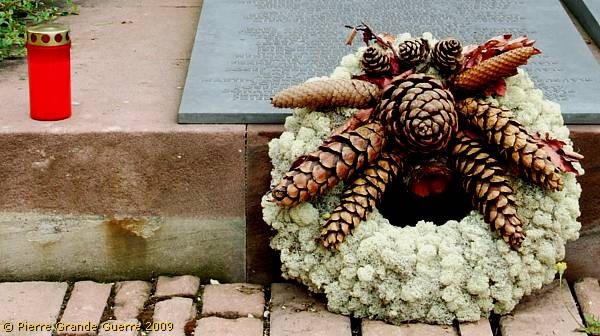VERDUN - Azannes - Romagne-sous-les-Côtes - Damvillers - La Grande Montagne, American Memorial - Consenvoye
Year of visit: 2009
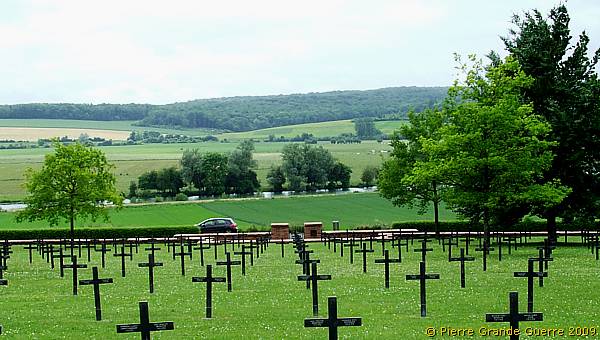
From the Destroyed Village of Ornes we continue our route along the 1916 German Jump-Off Lines to the German War Cemeteries of Azannes I, Azannes II, Romagne-sous- les- Côtes, and Damvillers. To break this possible monotony we visit the American 316th I.R. Memorial at La Grande Montagne, a former German stronghold, also known as Hill 378. We end our meandering trip with the German War Cemetery of Consenvoye along the east bank of Meuse river.
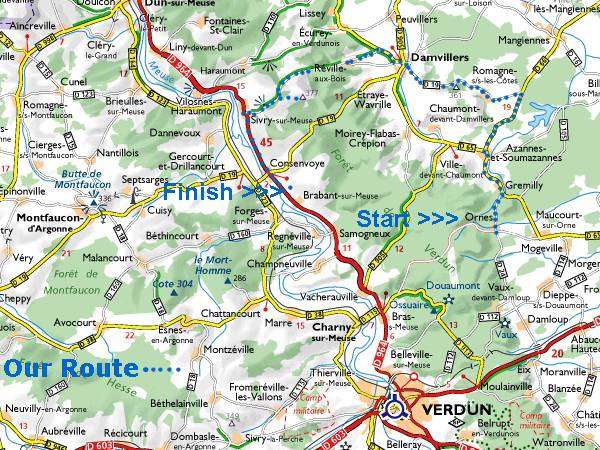
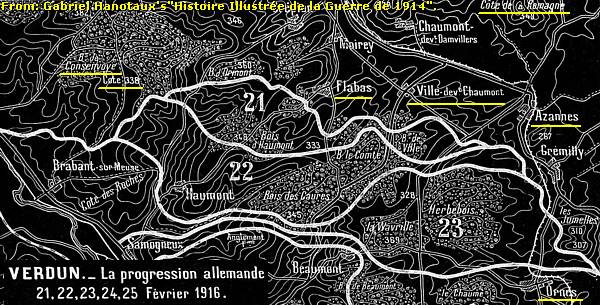
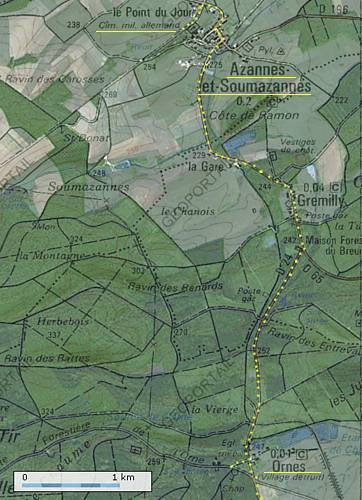
We start at the western outskirts of Azannes-et-Soumazannes with a visit to the
Deutscher Soldatenfriedhof Azannes I
.

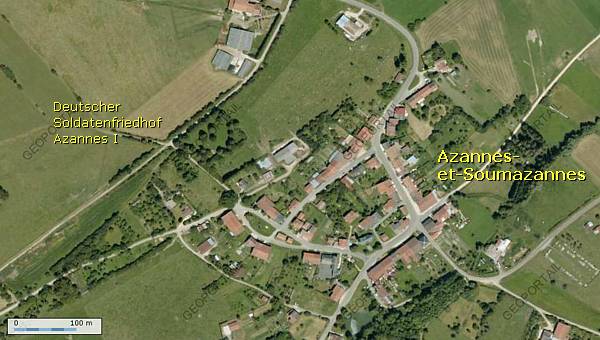
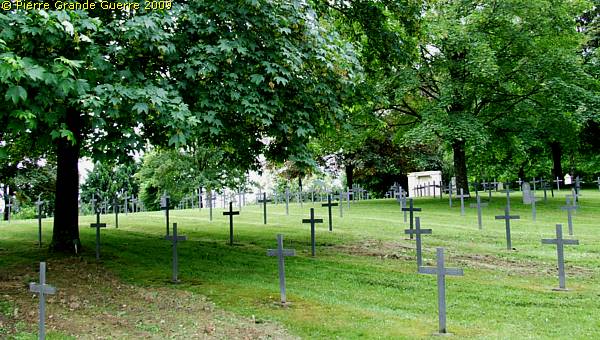
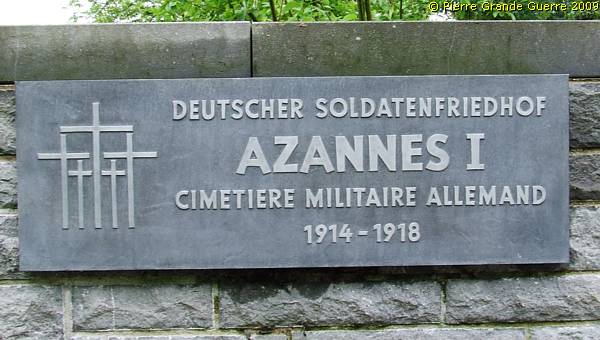
The German military cemetery Azannes I was created at the start of the Battle of Verdun in February 1916 by German troops, when they for the first time were in need of a burial place for their dead. The majority of buried soldiers here were killed in the first three months of the battle. Many of these men were involved in the attack at Fort de Douaumont. They belonged to six divisions, which in this area of numerous attacks and defence had to suffer particularly high losses. The Royal Bavarian Armierungsbattaillon X even created his own memorial on the cemetery. These soldiers belonged to army units of their home garrisons in Bavaria, Hesse, Saxony, Brandenburg, East Prussia, Mecklenburg, Posen and Schleswig-Holstein.
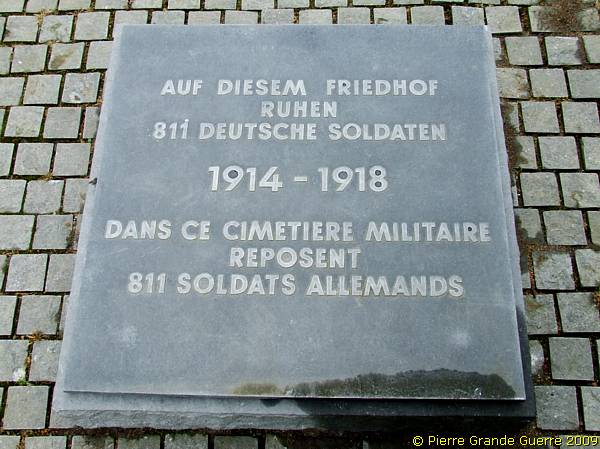
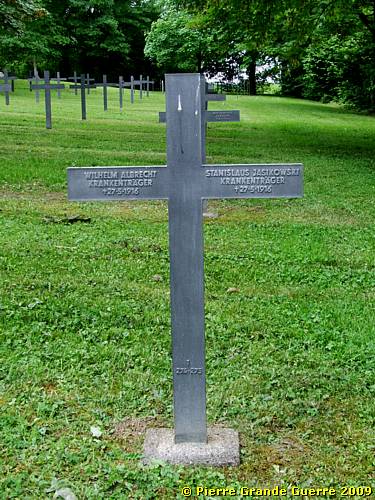

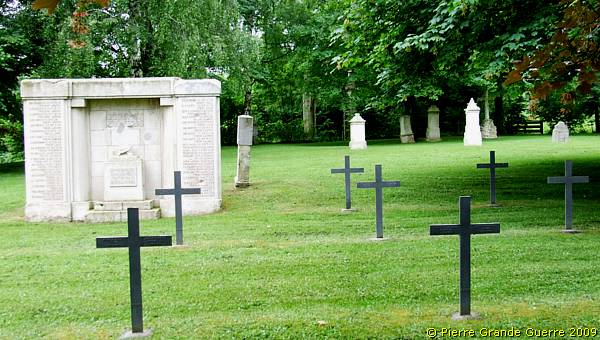
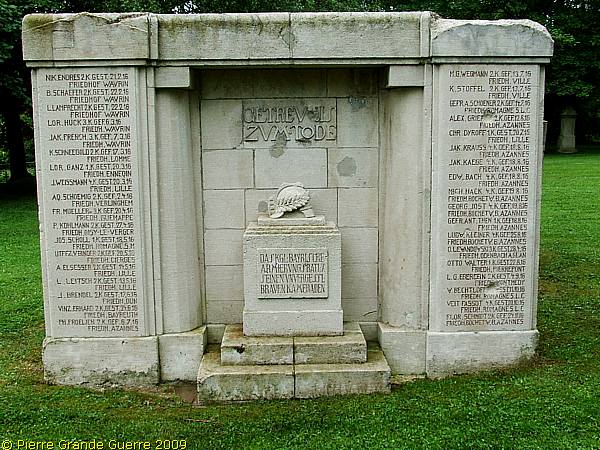
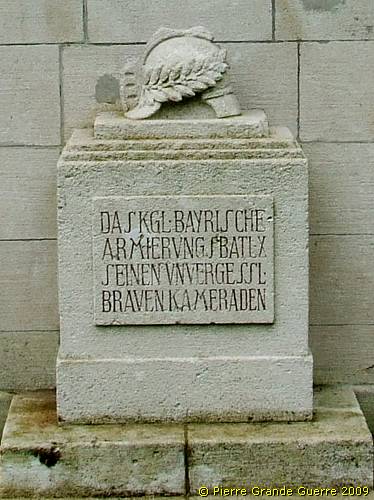
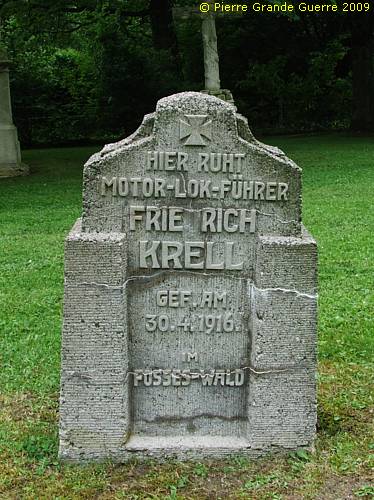
Graves of two Leutnants. The Hebrew words on the grave of the Jewish Leutnant Levi mean:
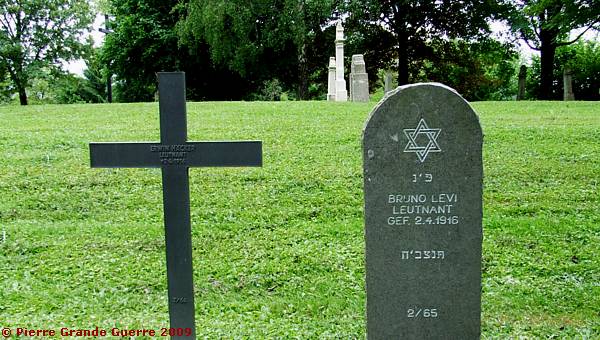
With a last view we leave the cemetery, ...
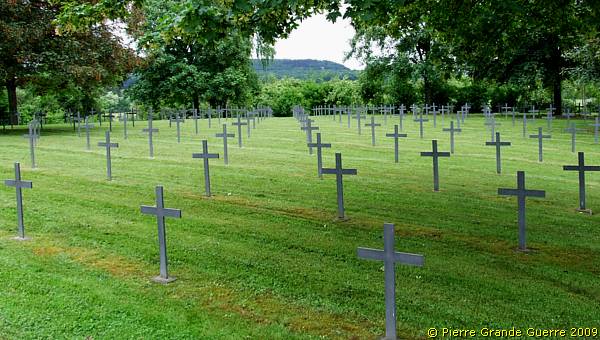
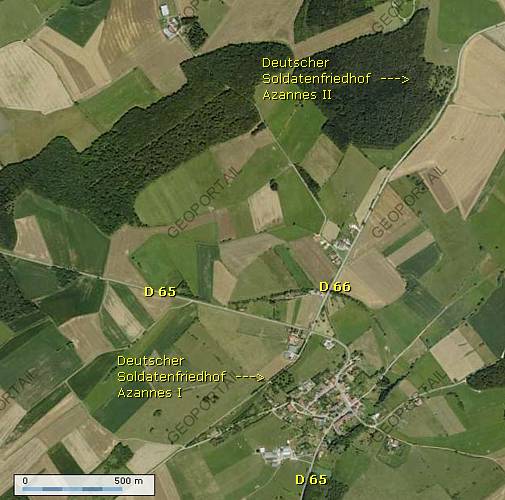
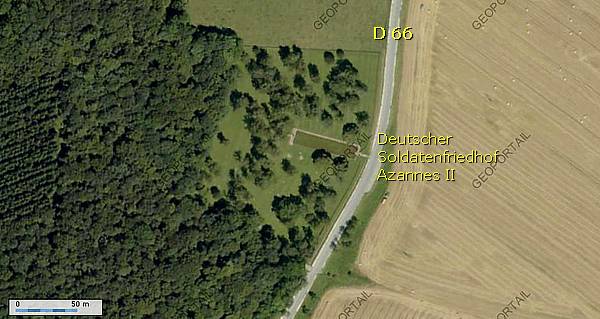
A communal grave for 187 soldiers oversees the cemetery.
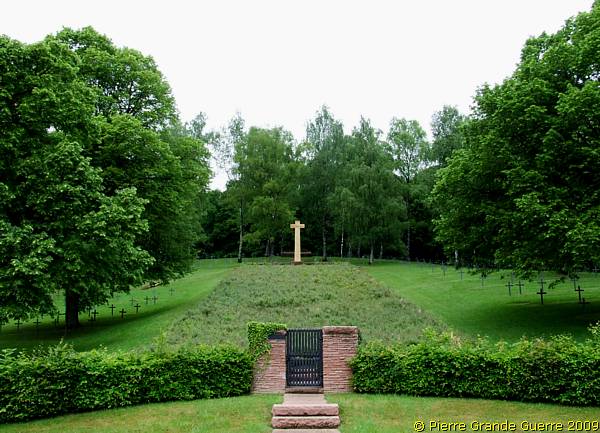
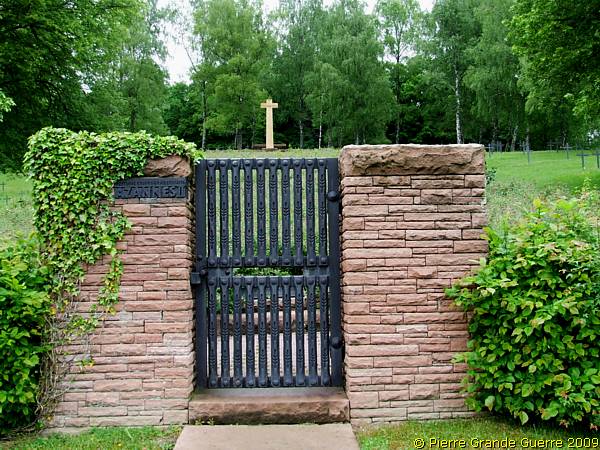
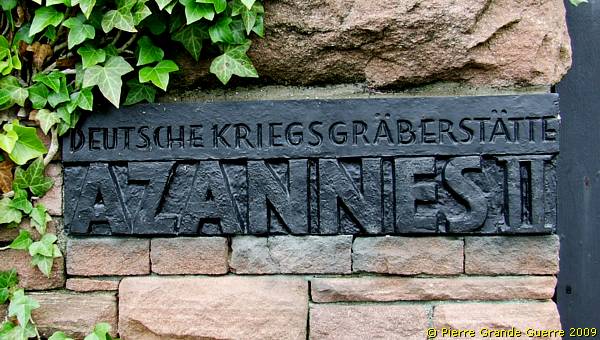

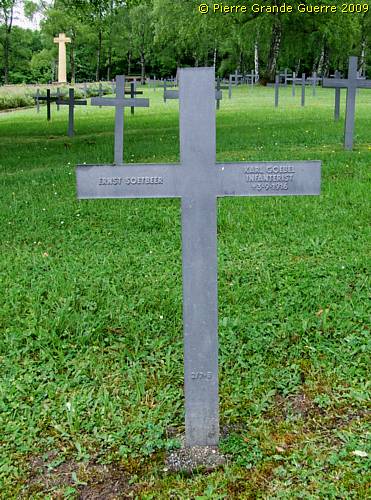
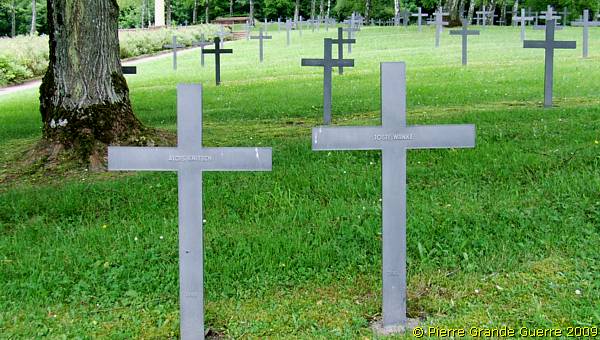
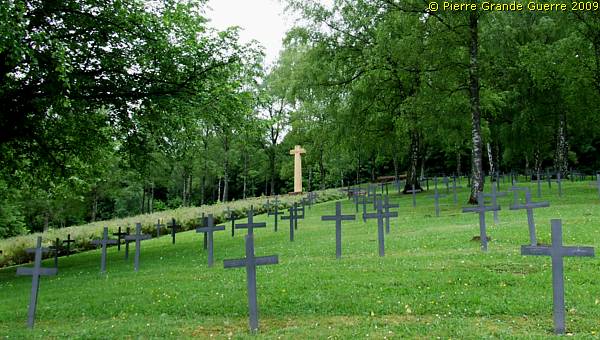
... Romagne-sous-les-Côtes Deutscher Soldatenfriedhof .
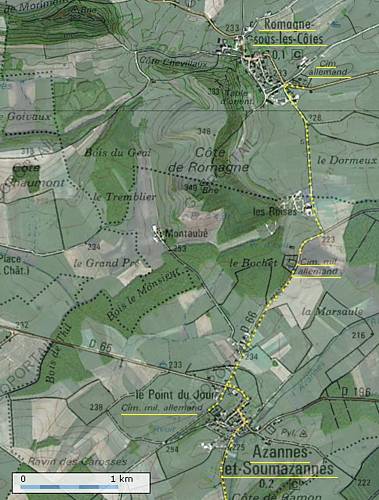
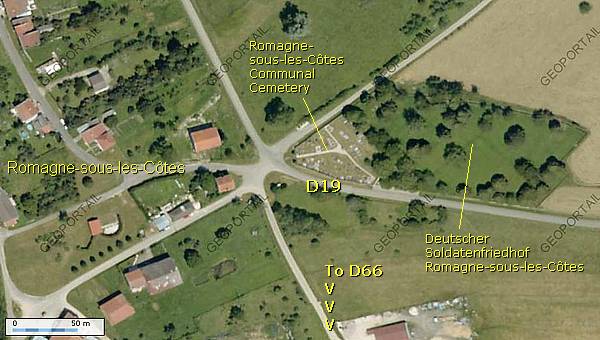
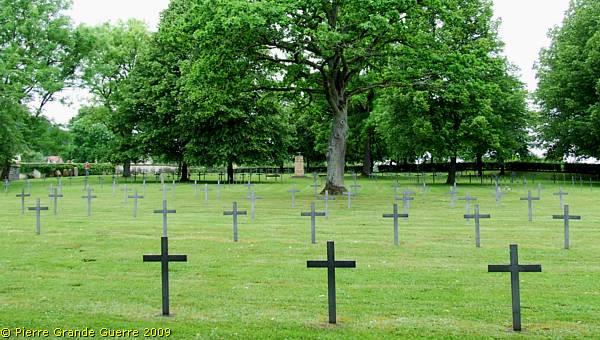
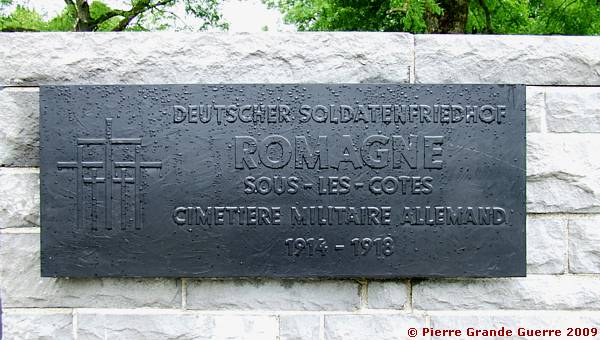
At that time the initial positions ran just 2-3 km south of Romagne. Consequently many men, fallen during the first days of attack, rest here at the cemetery. In addition to the wounded they were brought back from the front line by combat troops . The majority of them were killed in the Bois de Chapitre, before Souville and Fleury, or at Fort de Douaumont. Others died at Damloup and near Fort de Vaux. Even before the start of the offensive several hospitals and dressing stations had been established in Romagne. Many of the severely wounded succumbed here to their injuries and also found a grave in this cemetery. The French attack in August and September 1917 again demanded heavy sacrifices and led to the evacuation of Romagne-sous-les-Côtes, which was constantly under bombardment of French heavy artillery. This ended in August 1917. A small number of casualties from the first battles at Verdun in August 1914 were recovered from their graves in 1916 and were buried also in this cemetery. The soldiers, buried here, belonged to army units from Bavaria, Brandenburg, East and West Prussia, Mecklenburg, Pomerania, Hanover, Hesse, Baden, and Lorraine.
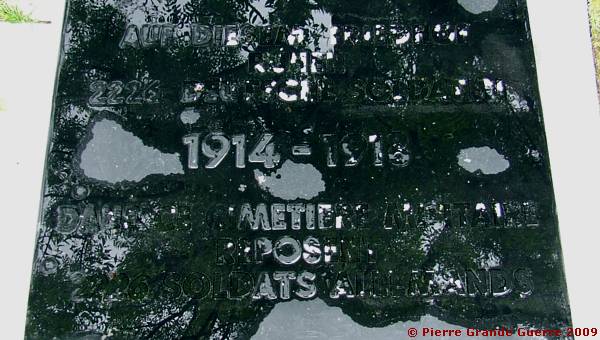
Again; only some necessary words...
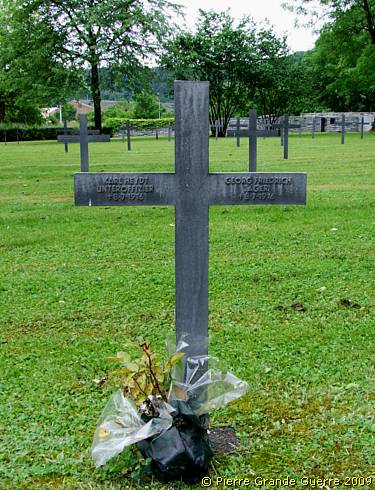
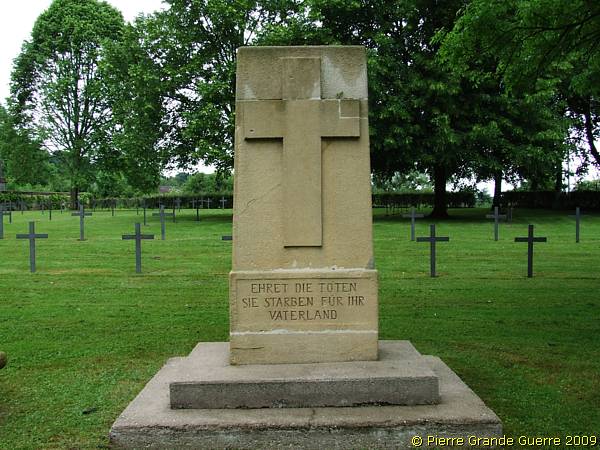
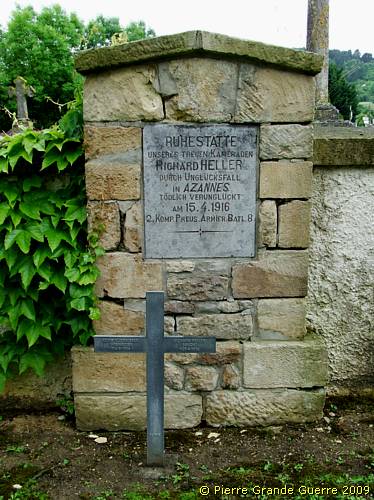
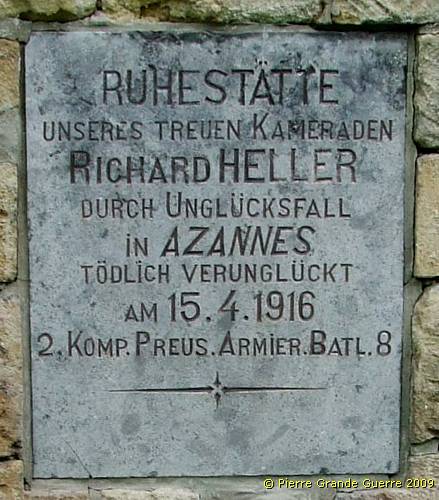
Against the cemetery wall rest 4 remarkable headstones.
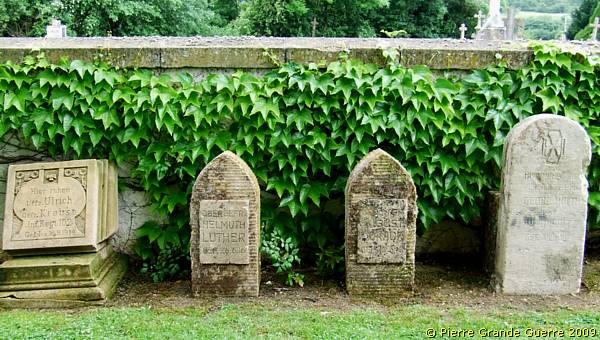
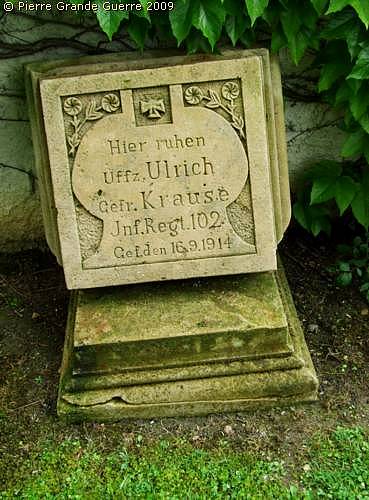
The grave of an Obergefreiter, a Corporal.

A Pionier, killed on 15 June 1916.
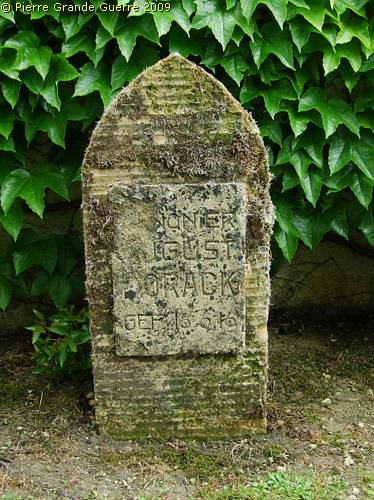
Two Pioniere share this grave, also killed on 15 June 1915.
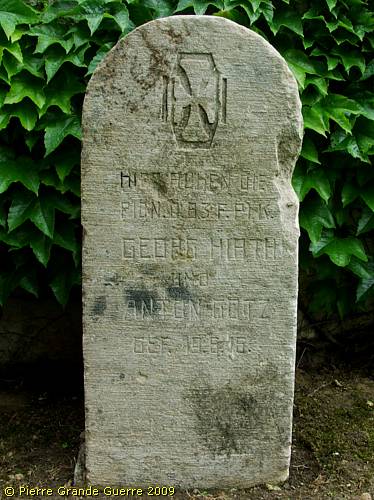
A last view over the cemetery.

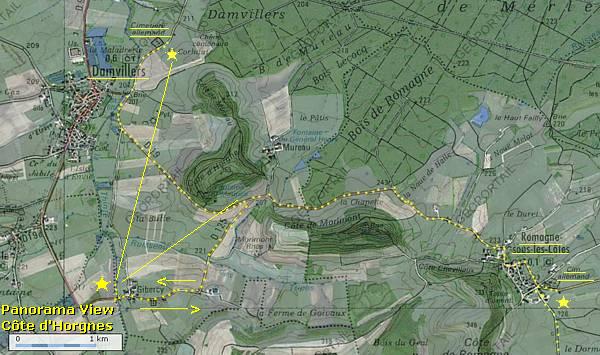
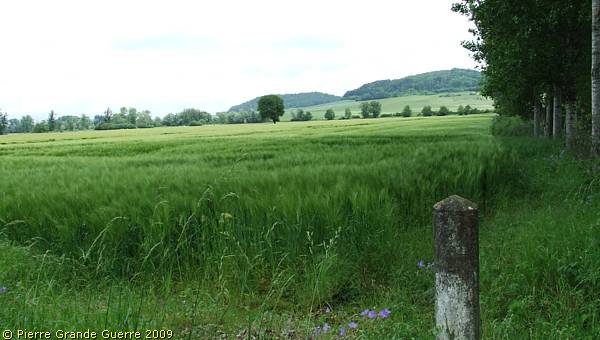
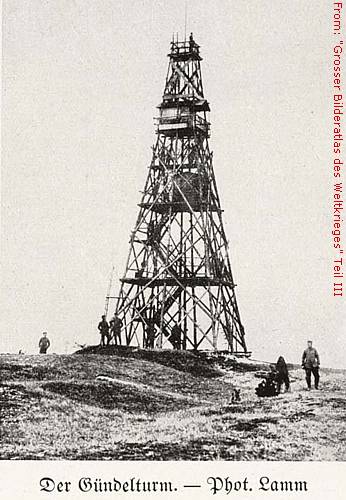
Der Gündellturm - The Gündell Tower
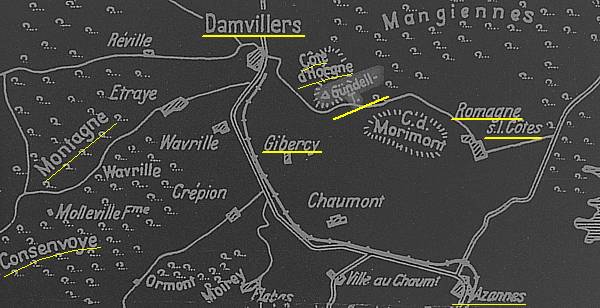
On 26 February 1916 Kaiser Wilhelm II visited the tower for a panorama view over the battlefield. In October 1917 members of the Reserve.I.R. 7 pulled the tower down.
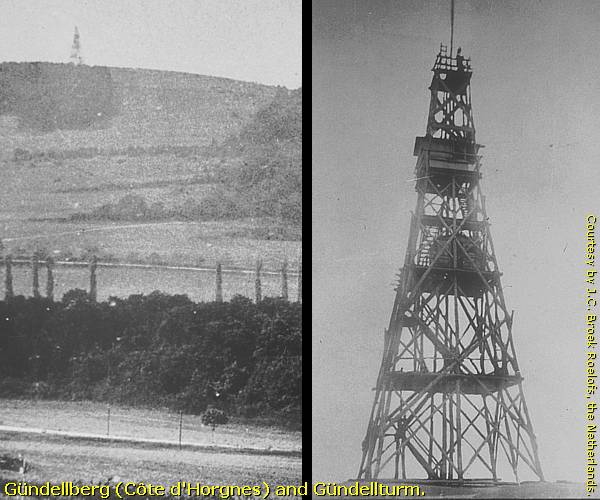

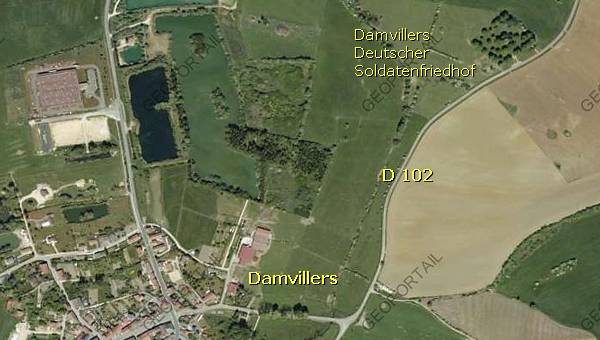
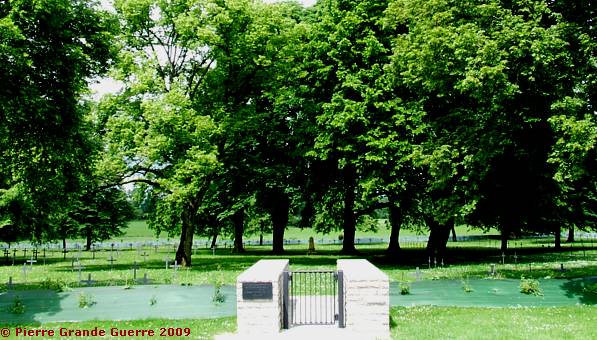
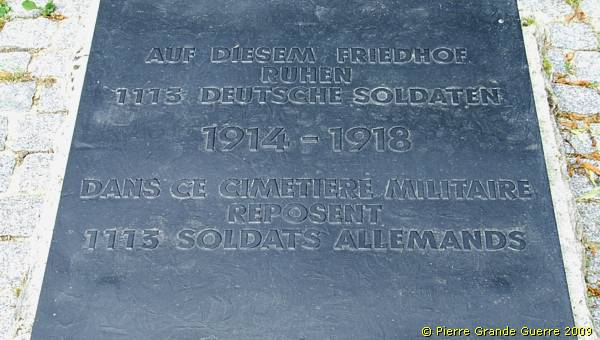
The jump-off positions of the German 1916 offensive were located a few kilometres south of Damvillers. The Germans established in the village facilities for a large number of staffs and field hospitals. From February to mid-September 1916 one dressing station in particular, Reserve Field Hospital No. 48, set up as a ”Leichtverwundetensammelplatz”, took care here of about 8.400 wounded men. Brought back dead, or succumbed to injuries, and as a result of accidents or illnesses, the number of graves of the dead augmented here rapidly. Many dead soldiers came as victims of the French counteroffensive in August 1917 and the Franco American Meuse-Argonne Offensive of 1918. During this time four soldiers of the Austro-Hungarian Army died and were buried here. They belonged to one of the four Austrian divisions, which were send to the Western Front to support the German Armies in the summer of 1918. The German soldiers, who rest here, belonged to army units from almost all German countries of Imperial Germany and from the Prussian provinces.

Reserve Field Hospital No. 48 was situated at this location.
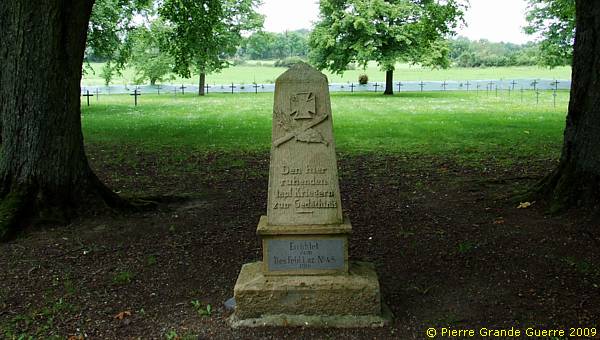
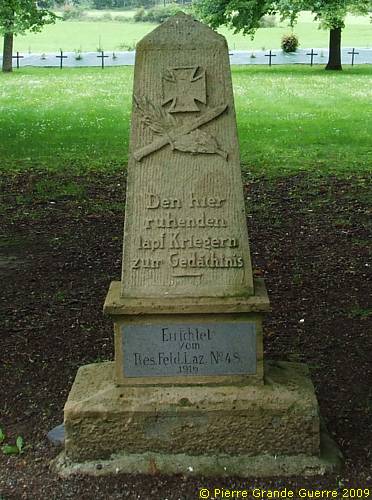
A view westward over the Damvillers cemetery.
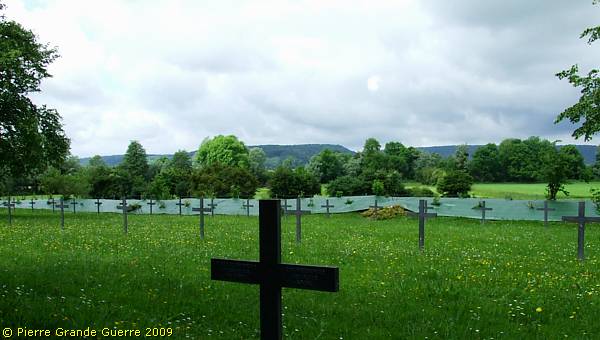
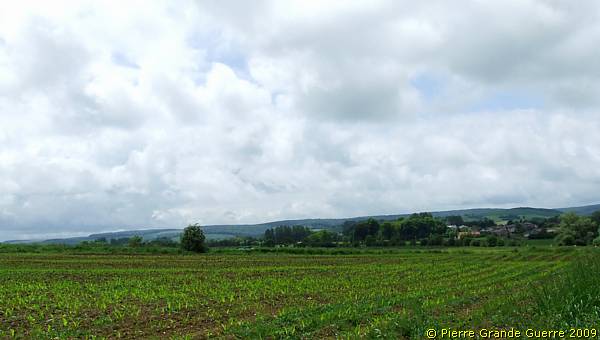
La Grande Montagne - Hill 378 .
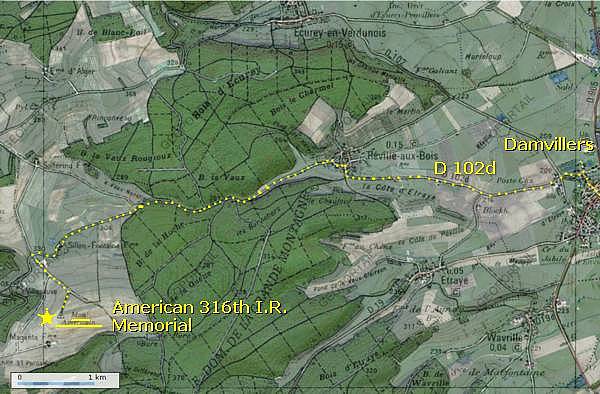
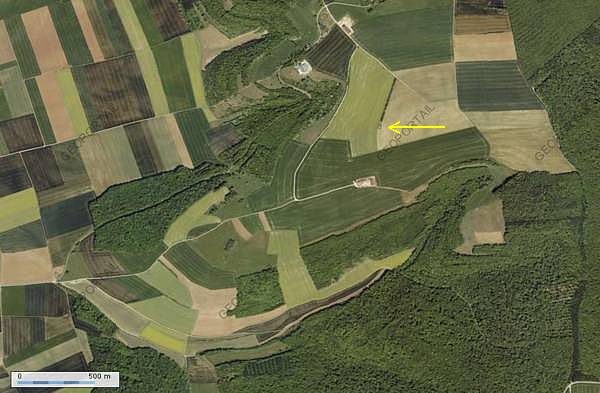
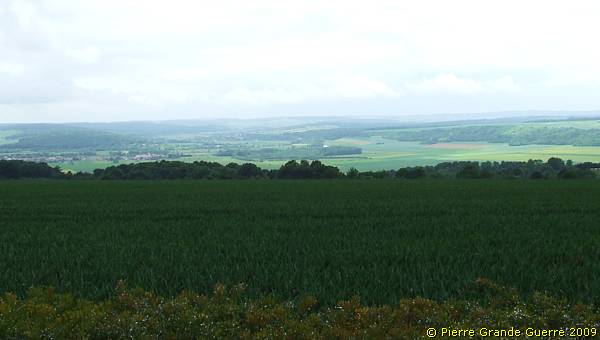
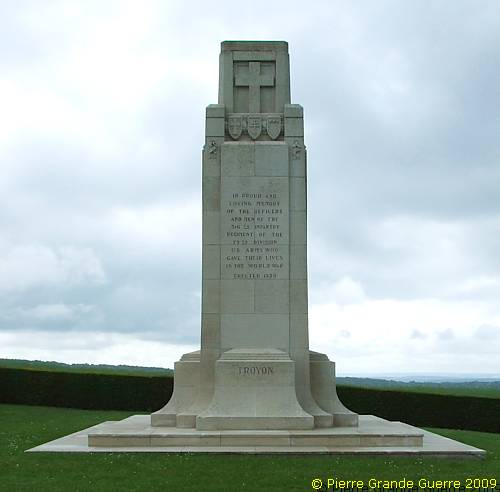
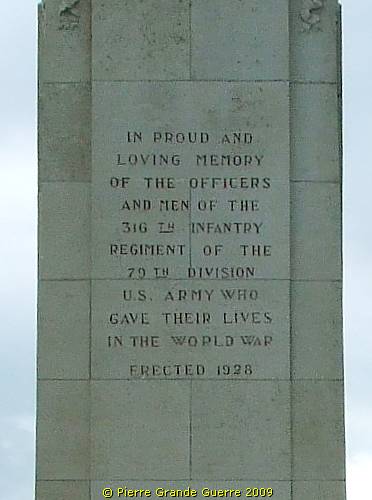
This hill used to be the infamous German stronghold of Hill 378.
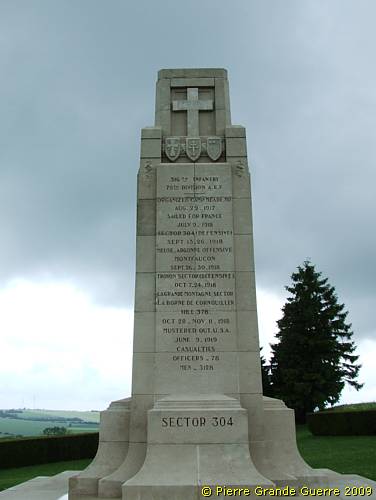
The Battle of La Grande Montagne (3 -7 November 1918)
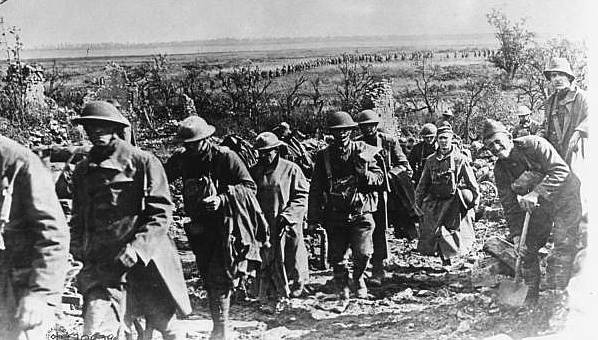
After the First Battle of the Marne in September 1914 the Germans constructed in this area on both banks of the Meuse impressive defensive positions, the Kriemhilde Line. It ran roughly from Apremont in the west until Damvillers in the east.
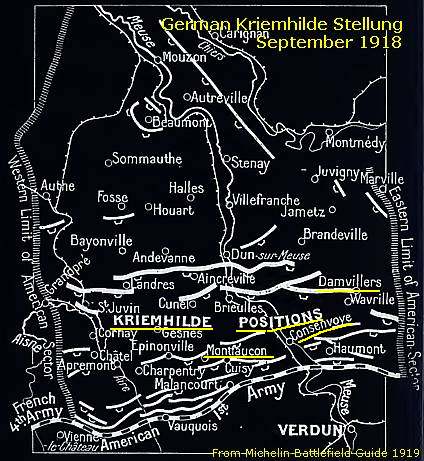
Almost at the end of the Meuse-Argonne Offensive (26 September - 11 November 1918), on 23 October 1918, the Americans succeeded to conquer the villages Sivry-sur-Meuse and Consenvoye at the foot of the height of la Grande Montagne (378 m.).
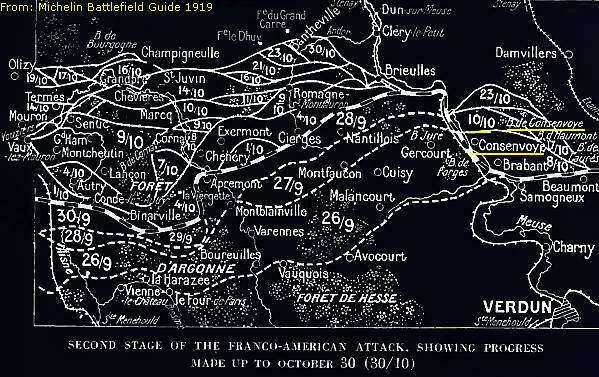
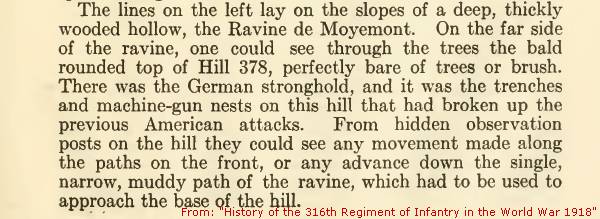
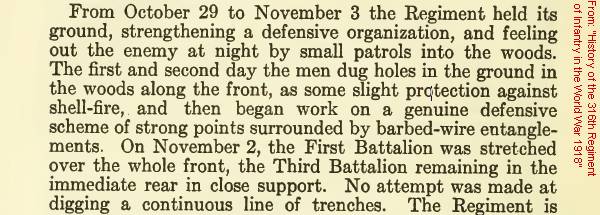


In the early night of 3 November Major Manning is ordered to begin “an offensive reconnaissance”. The Major and his troops know to occupy the crest of the hill in shell hole defence positions and not in trenches, but they were almost annihilated by German machine gun fire and artillery fire.

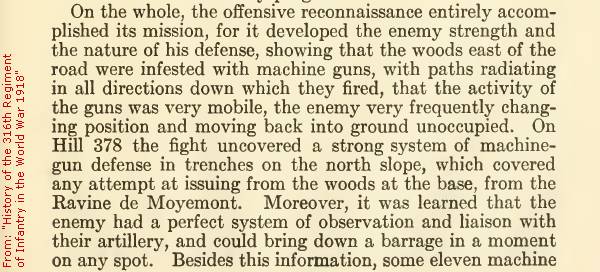


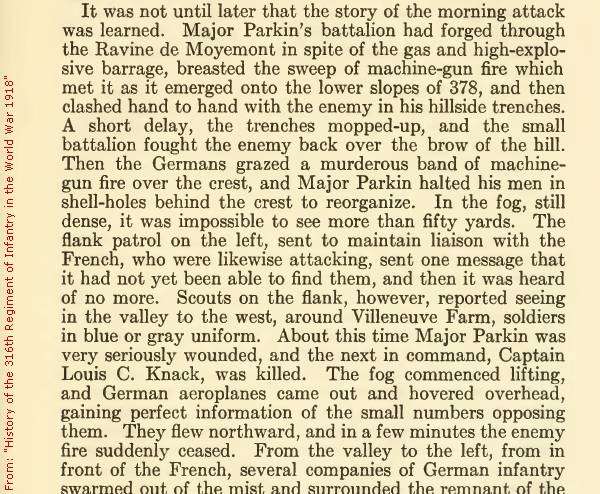
On 5 November started the failed attack of Major Manning, during which he was killed.
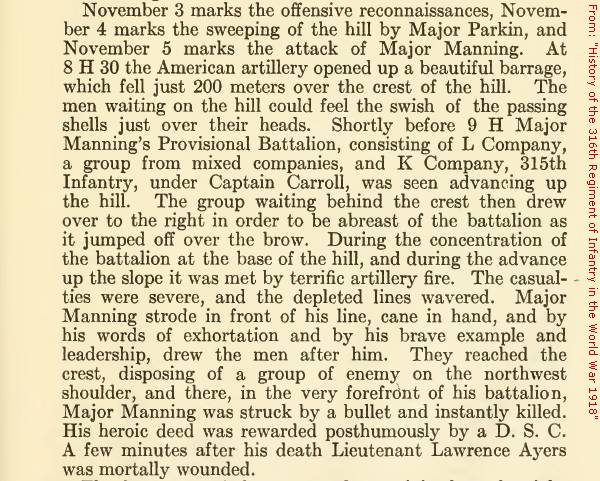
At the end of the day of the 6th of November the 316th succeeded to occupy the crest of the hill, still in shell hole defence positions.
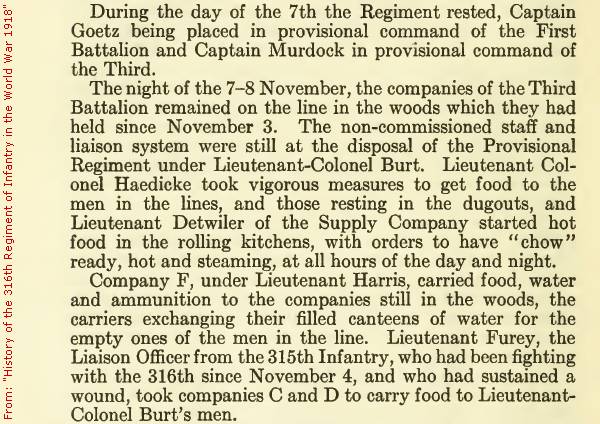


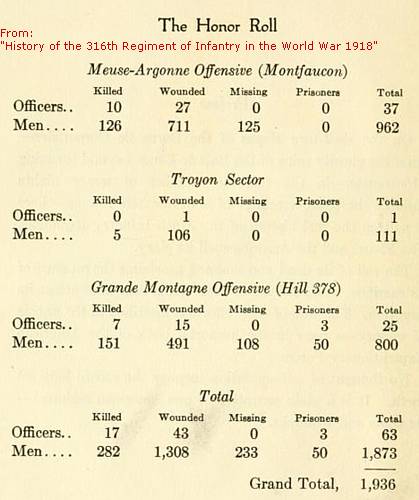
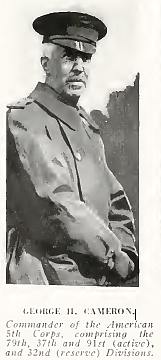

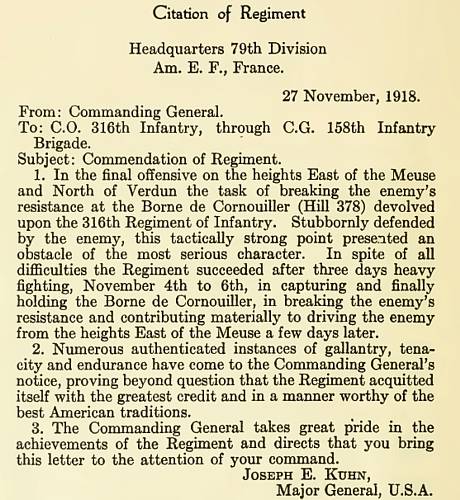
| Read more about this in the History of the 316th Infantry Regiment itself and click HERE
. Visit also
the
Argonne Photo Impressions
and
Montfaucon
in particular for more info and detailed maps concerning the Meuse-Argonne Offensive.
|
Quite remarkable: the Memorial mentions 3.128 casualties and 78 officers casualties.
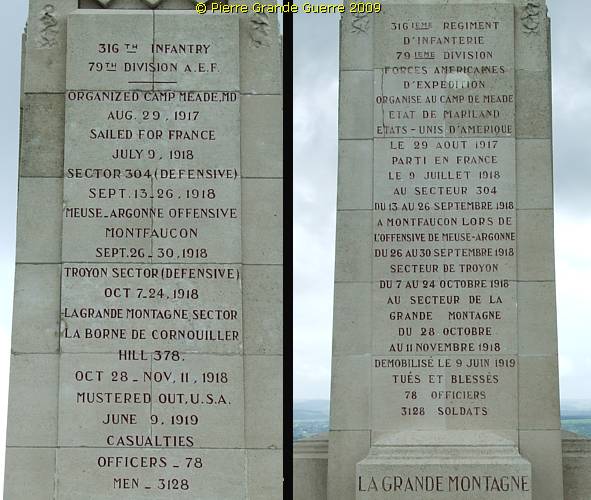
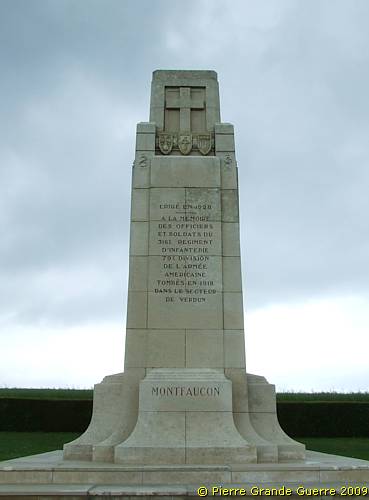
The spot of the Memorial offers a panorama view over the area of the American campaign and over the battlefields from Montfaucon, towards and over the river Meuse.
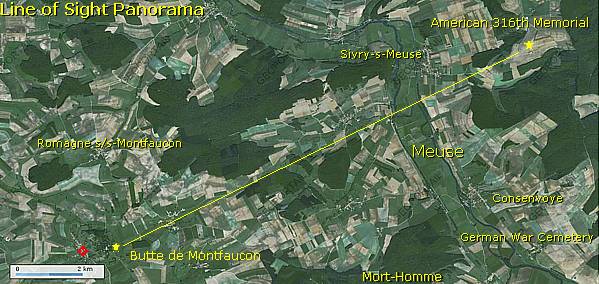
On the horizon you will detect the Doric column and the statue of the American Meuse-Argonne Memorial at Montfaucon.
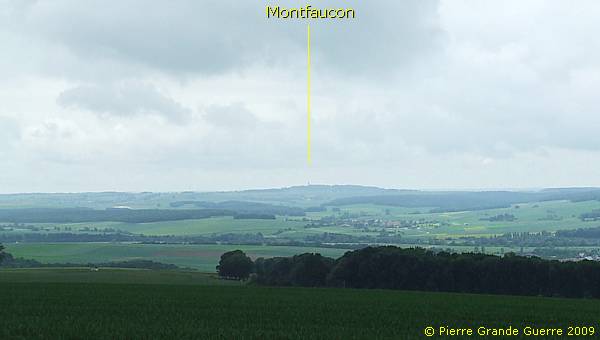
American Meuse-Argonne Memorial at the Butte de Montfaucon , Argonne.
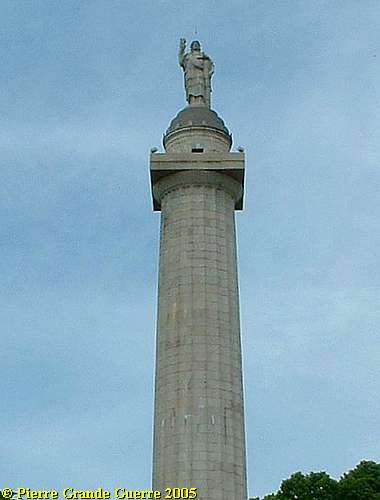
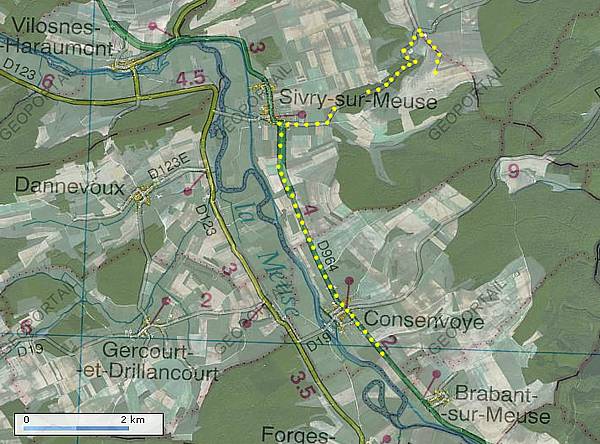
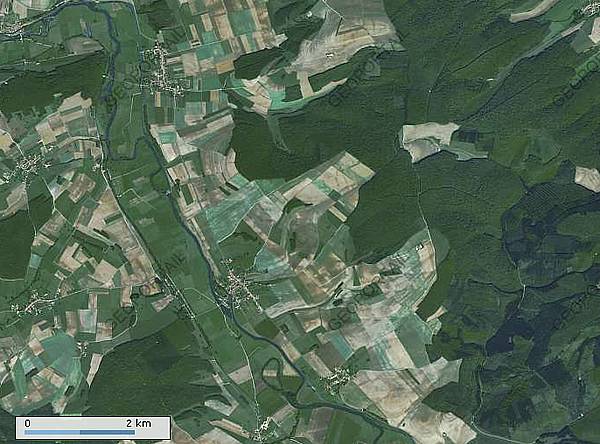
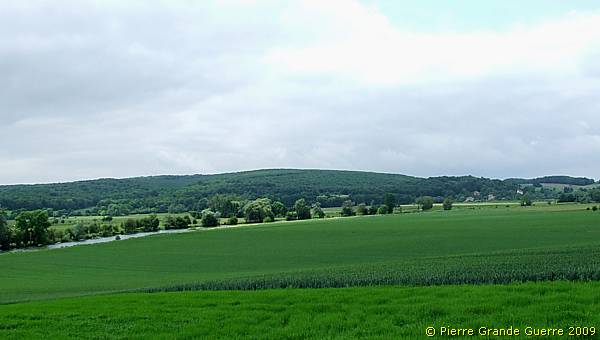
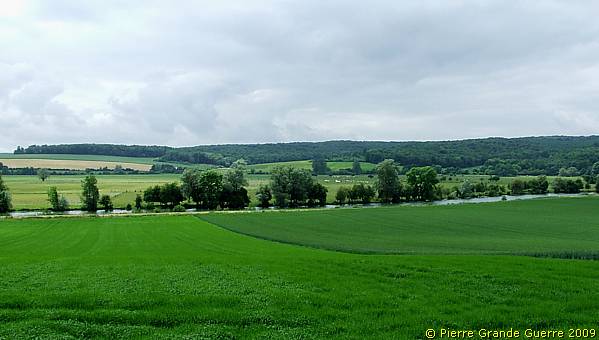
French period aerial photograph
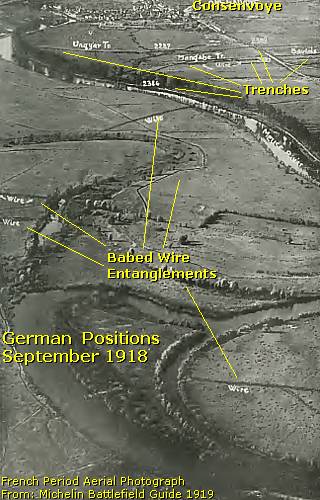
This French period aerial photograph shows the German barbed wire entanglements and trenches along the Meuse in and around the village of Consenvoye, which the Americans succeeded to conquer on 10 October 1918.

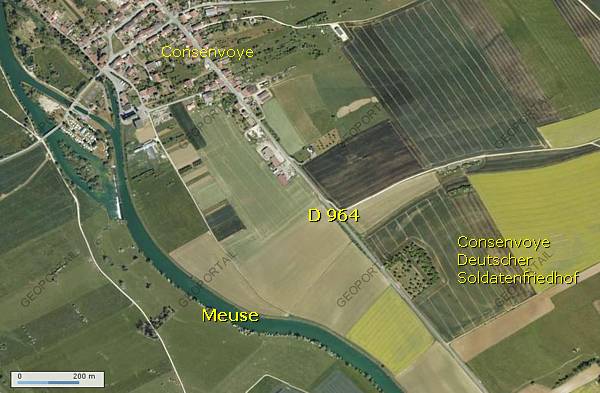
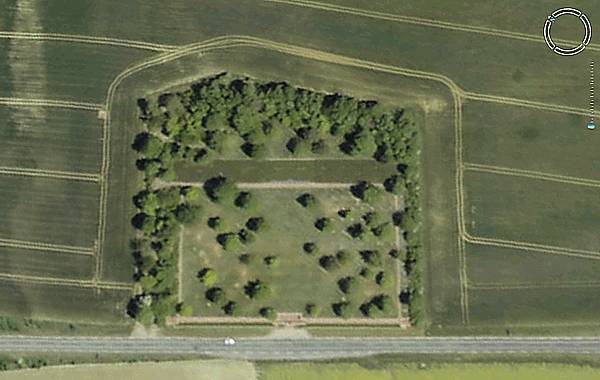

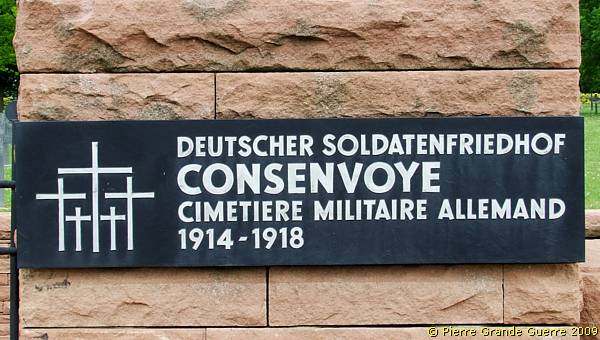
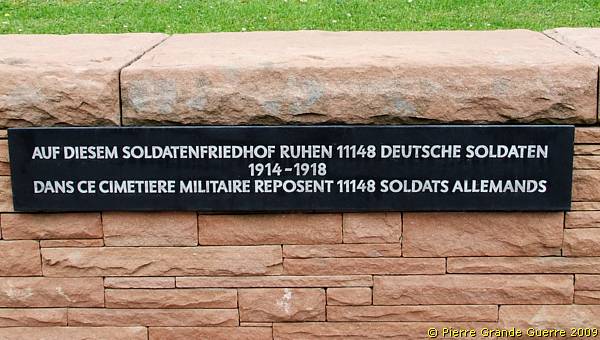
A mass grave, containing the human remains of 2.537 soldiers, oversees the cemetery.
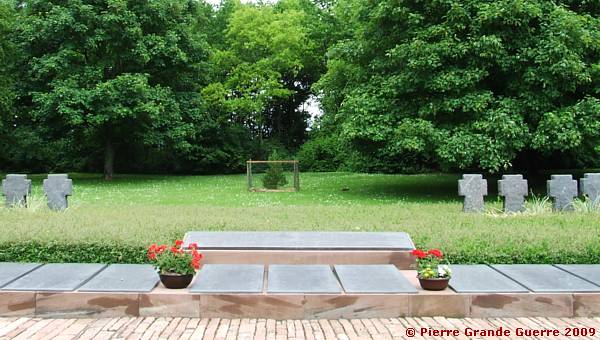

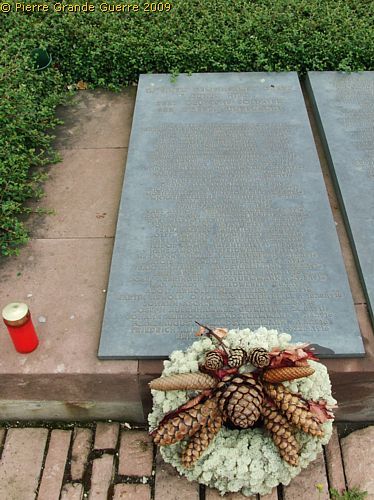

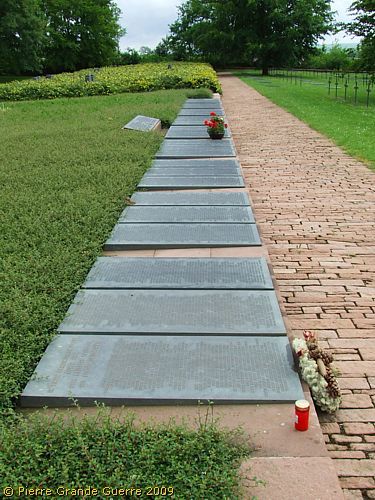
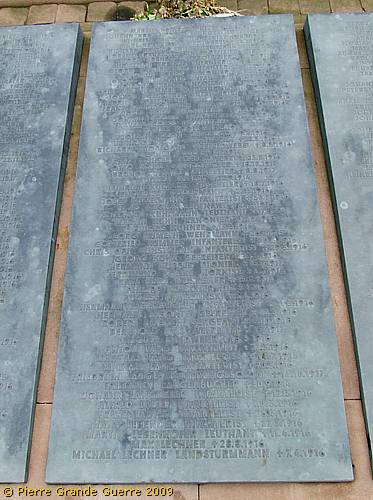
View over the thousands of flowers of the mass grave.
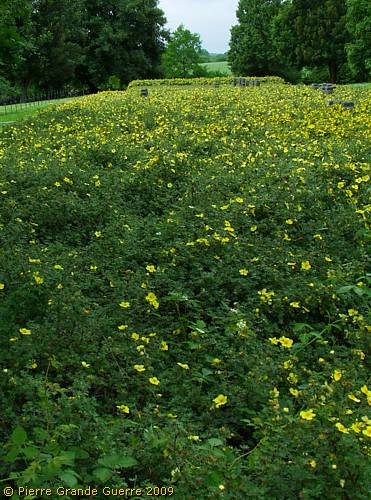
In between the graves with iron crosses, ...

... lie communal graves with bronze tiles, ...
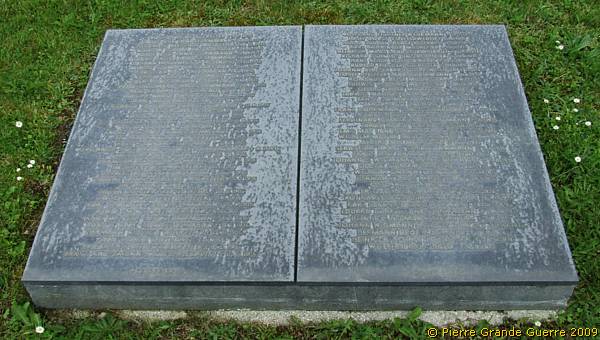
... inscripted with lists of names.
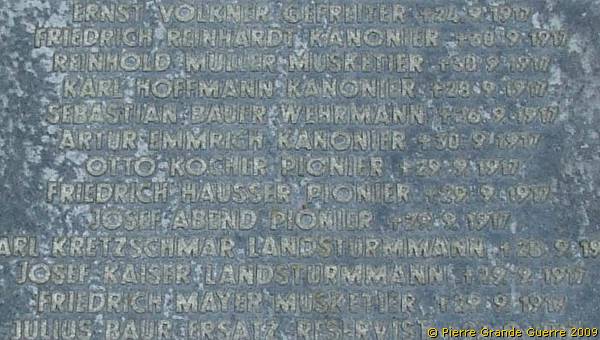
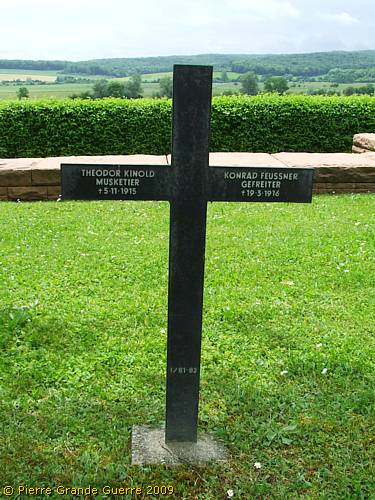
View from the mass grave over the Meuse, ...

... to the slopes of the Mort Homme .
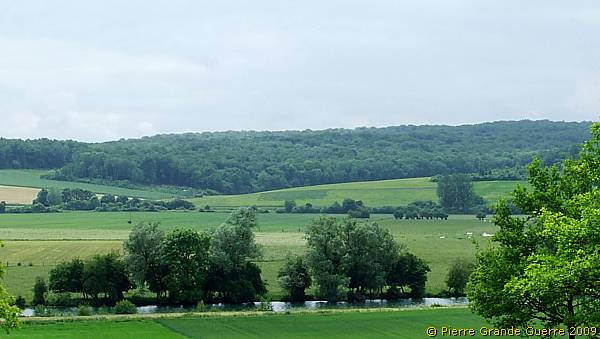
Silently and impressed by these huge numbers we leave the cemetery and we end our trip along the former German lines around Verdun.
